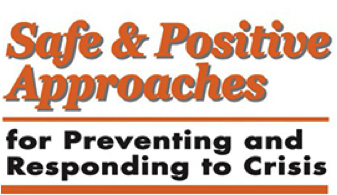Safe and Positive Approaches for Preventing
and Responding to Crisis

Part 2 - Safety Techniques TrainingStaff Effectiveness Training presents safe and effective physical intervention techniques that are used in situations in which someone is being physically threatened or harmed and verbal intervention alone is not effective. Safety Techniques provide staff members with passive, evasive movements that protect and minimize the risks of injury to themselves, the individual and others. Learning Objectives: A. Participants will be able to identify the circumstances under which Safety Techniques are to be used and be able to define a "crisis"situation. B. Participants will be able to describe the underlying principles of Safety Techniques which include Position, Leverage, Balance and Conservation of Energy. C. Participants will be able to identify the appropriate Safety Technique to use in crisis situations and be able to correctly perform each technique approved for use at their setting. D. Participants will be able to identify advantages and benefits, as well as limitations and risks, of each technique. Core Program Components:
NOTE: Safety Techniques are trained and utilized by staff only as approved and specified by organizational policy and procedure. Supplemental Learning Activities:
|
Program Descriptions |
